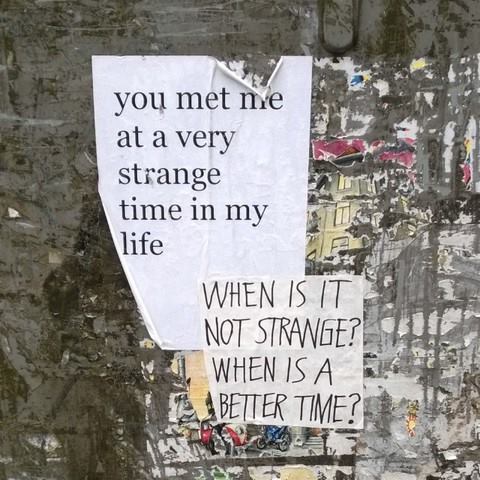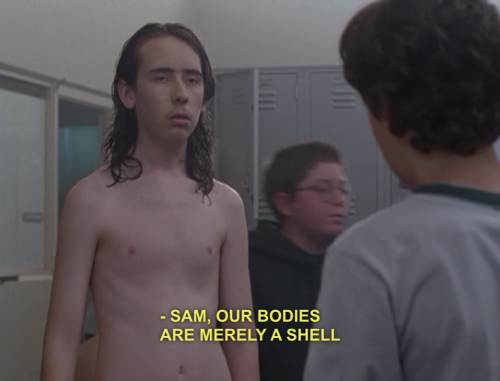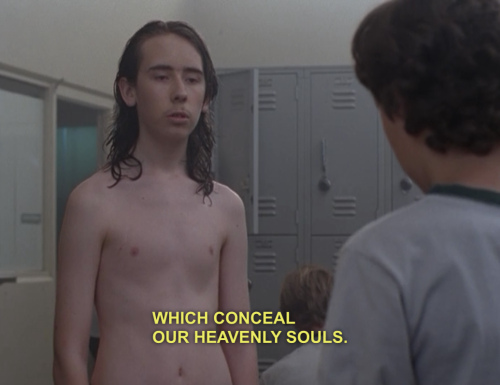
Cannibalism can show up at the most unexpected points in history.
Most people don't associate cannibalism with the Soviet Union. But as Timothy Snyder describes in his book Bloodlands, the 1933 Stalin-imposed famine in Ukraine was so severe that cannibalism became surprisingly prevalent. The state had to set up an anti-cannibalism squad, and hundreds of people were accused of eating their neighbors or, in some cases, their family members. (Ron Rosenbaum shares many of the gruesome details in a book review for Slate.)
The grisly episode makes vivid the deprivations of the early Soviet era. That many Americans may have never heard of it illustrates another fact about cannibalism — it's something no one ever wants to think about. It's relegated to disgust, tabloid voyeurism, and lame jokes, and those all contribute to a general ignorance of the subject.
Historians and anthropologists, however, have tried to study the history and science of cannibalism over the years: why it happens, when it occurs, and who's affected. It tests the ultimate boundaries of cultural relativism, health, and ritual. Though this list isn't at all comprehensive, it catalogs some of the unusual things about cannibalism you might have missed.
Turns out there are a lot of myths about cannibalism — and how it's been practiced over time. Here are a few surprising things experts have learned:
1) Humans are mostly hard-wired against cannibalism — but not always
There's a good biological reason why cannibalism is taboo in virtually every culture: Eating other humans can make you sick.
Specifically, eating the brain of another human being can cause kuru — a brain disease that's similar to mad cow disease. Kuru occurs because our brains contain prions that transmit the disease. Symptoms begin with trembling and end in death.
What's surprising, though, is that this isn't always the case. Among anthropologists, the Fore people in Papua New Guinea are known for cannibalism. Up until the late 1950s, they ate the bodies of relatives to cleanse their spirits. Thousands of Fore contracted kuru and died ("kuru" actually comes from the Fore word for shaking). But not all of them fell victim to the disease: Over the last 200 years, some Fore have also developed a genetic mutation that protects them from the prions that transmit kuru.
The Fore were adapting to cannibalism — with natural selection possibly playing a role in reducing their susceptibility to disease. Scientists have been trying to study this further, but in recent decades, cannibalism has been declining among the Fore because of changing social mores and laws. If that continues, kuru may be wiped out entirely.
2) Animals are mostly hard-wired against cannibalism — but not always
A cane toad. (Ian Waldie/Staff/Getty Images)
Cannibalism is rare in the animal kingdom — except when it isn't.
A few years ago, Natalie Angier of the New York Times chronicled the tales of the cane toad, caecilian, redback spider, and other animals that eat their own species. The cane toad, for instance, actually prefers cane toad eggs to other options.
How can that possibly be a good idea? Here's Angier: "Researchers propose three motives. The practice speeds up maturation; it eliminates future rivals who, given a mother toad’s reproductive cycle, are almost certainly unrelated to you; and it means exploiting an abundant resource that others find toxic but to which you are immune."
Those evolutionary imperatives extend to a wide range of organisms — even including occasional cannibalistic dalliances from animals like the sloth bear. As Mary Bates described in Wired, it's not unknown for sloth bears to eat members of their own family (possibly because they're under stress).
These human and animal cases are more than curious footnotes. They show that evolution can work in ways that run counter to our cultural values. Evolution happens through natural selection and doesn't always line up with things we might value as a society, and evolved cannibalistic behavior illustrates that important distinction.
3) "Cannibalism" was named after people who might not have been cannibals
Caribs depicted as cannibals. ( MPI/Stringer/Getty Images)
A few basic questions about cannibalism are difficult for historians to answer: How many groups practiced cannibalism? When did it start? And how common is it? Those questions are tough because "cannibalism" has been used throughout time to describe many different things. That's also the reason most modern anthropologists and scientists prefer the term "anthropophagy" to "cannibalism."
There are cultures that engaged in cannibalism as a ritualistic practice, but there are also times when people resorted to cannibalism during famine. And at times, the word "cannibalism" has been used to describe all sorts of tactics — and people — seen as savage. Cannibalism is occasionally descriptive, occasionally circumstantial, and occasionally an indirect ethnic slur.
Case in point: The word "cannibalism" itself comes from the name that the Spanish gave to the Caribs (Caníbales). The Spanish accused the Caribbean tribe of ritualistically eating their enemies, but modern-day scholars have doubts that it actually happened. Because the Caribs were engaged in an anti-colonial battle with a host of European powers, many historians now argue that the cannibalism rumors were just a propaganda tactic by the Spanish meant to stir up fears.
On the other hand, we have some evidence the Caribs used body parts as trophies, so cannibalism is a possibility — especially as an intimidation measure or act of war. However, most of our initial testimony comes from Columbus, who had many reasons, both personal and political, to make the Caribs seem as savage as possible.
4) Cannibalistic rituals could be surprisingly complex
An engraving depicting the Tupi. (DeAgostini/Getty Images)
One of the first prominent European accounts of cannibals appeared in Montaigne's late-1500s essay Of Cannibals. In addition to being an invaluable anthropological record of the Tupi people in what is now Brazil, the essay sheds light on the intricate practice of cannibalism at the time. Sometimes, the Tupi lived with their captives for months before they were eaten. And they sang to each other.
As Montaigne recorded, the captors taunted captives by "entertain[ing] them with threats of their coming death." And the captives replied in a fashion that was like a song or chant. Montaigne writes:
I have a song composed by a prisoner which contains this challenge, that they should all come boldly and gather to dine off him, for they will be eating at the same time their own fathers and grandfathers, who have served to feed and nourish his body. "These muscles," he says, "this flesh and these veins are your own, poor fools that you are."
Musicologist Gary Tomlinson, who wrote about the Tupi in The Singing of the New World, describes it as an "economy of flesh" that passed through the warring tribes for generations.
"It was a transaction across generations in these warring societies," Tomlinson says. "They were saying, 'In the future, you will be captured by my people, and we will eat you.' The transaction goes on and on."
5) Cannibalism was practiced in Colonial America
Archaeologists with a reconstruction of the Jamestown cannibalism victim. (The Washington Post/Getty Images)
Many people might think of cannibalism in distant history and undeveloped countries. But cannibalism was a feature of early American history too.
In 2013, archaeologists revealed they'd found evidence of cannibalism in Colonial Jamestown — an indication of just how desperate early Colonial life had been. Specifically, they discovered markings on the skull of a 14-year-old girl that strongly indicated she'd been eaten by settlers during the particularly difficult winter of 1609.
It was more concrete evidence for something historians had read stories about for years. As Howard Zinn excerpted in A People's History of the United States, one government report painted a grim picture of that winter:
Driven thru insufferable hunger to eat those things which nature most abhorred, the flesh and excrements of man as well of our own nation as of an Indian.
6) The Donner Party wasn't solely about cannibalism
An illustration depicting the desperate journey of the Donner Party. (Fotosearch/Stringer/Getty Images)
When most people think of cannibalism in America, they probably think of the Donner Party — the famous travelers who resorted to the practice when they were stuck in the snowy Sierra Nevada mountains while traveling west in 1846.
What's surprising, however, is contemporary accounts of the trip focused less on the lurid accounts of cannibalism and more on the breadth of hardship that the party endured. As Donner Party historian Kristin Johnson notes: "Out of the more than 300 newspaper articles about the Donner Party published in 1847, the most common headline is a variation of 'From California' ... a mere seven [headlines] contain the word 'cannibalism.'" Accounts tended to highlight the fact that the party only resorted to cannibalism after eating boiled animal bones, hides, and even a beloved dog, Uno.
What's more, many people were just as interested in legends about the Donner Party's buried treasure as they were in the cannibalism. In the 1890s, a Sacramento newspaper reported that treasure rumors made the people of Truckee, California, "feverish with excitement" and included discoveries that would "delight the heart of a numismatist."
The treasure was probably a myth, but it shows that the story was considered far more complicated — and less purely shocking — than it is today.
7) Cannibalism was sometimes used as a medical treatment
There are many horrifying examples of cannibalism in Europe throughout history. But one of the most bizarre is that cannibalism was occasionally seen as a remedy. To pick one example, in Germany from the 1600s to 1800s, executioners often had a bizarre side job that supplemented their income: selling leftover body parts as medicine.
As described in Kathy Stuart's Defiled Trades and Social Outcasts, human fat was sold as a remedy for broken bones, sprains, and arthritis. Usually, this human fat was rubbed as a balm, not eaten. However, apothecaries regularly stocked fat, flesh, and bone, and there are also examples of a human skull being ground into a fine powder and mixed with liquid to treat epilepsy.
That treatment may sound strange, but remember that eating placenta has become a modern-day health fad. Most of the time, the popular verdict on cannibalism is clear — don't do it. But occasionally, what's cannibalism and what isn't has been surprisingly hard to define.
Further reading: For a more detailed story about cannibalism, try this one about the disappearance of Michael Rockefeller.
Watch: The fascinating process of human decomposition

:strip_icc(1)/https%3A%2F%2Fs3.amazonaws.com%2Fpolicymic-images%2Fqijmusg1pvxcittdl7xy1kn40q6kqnf0ywrw6g4hrduqywgvh9xovxktnl1zs9jy.jpg)










































 The listing is run by a guy who lives in a penthouse six stories over Skid Row. [
The listing is run by a guy who lives in a penthouse six stories over Skid Row. [ :strip_icc(1)/https%3A%2F%2Fs3.amazonaws.com%2Fpolicymic-images%2Fjowhazoxdnzi5jttf3z4hh50gsilctgdi1o0qvyyrbejhdht4jp8zp9in14y2h5q.jpg)


























